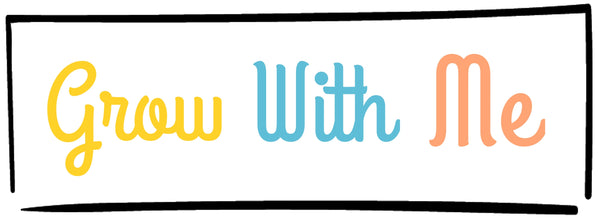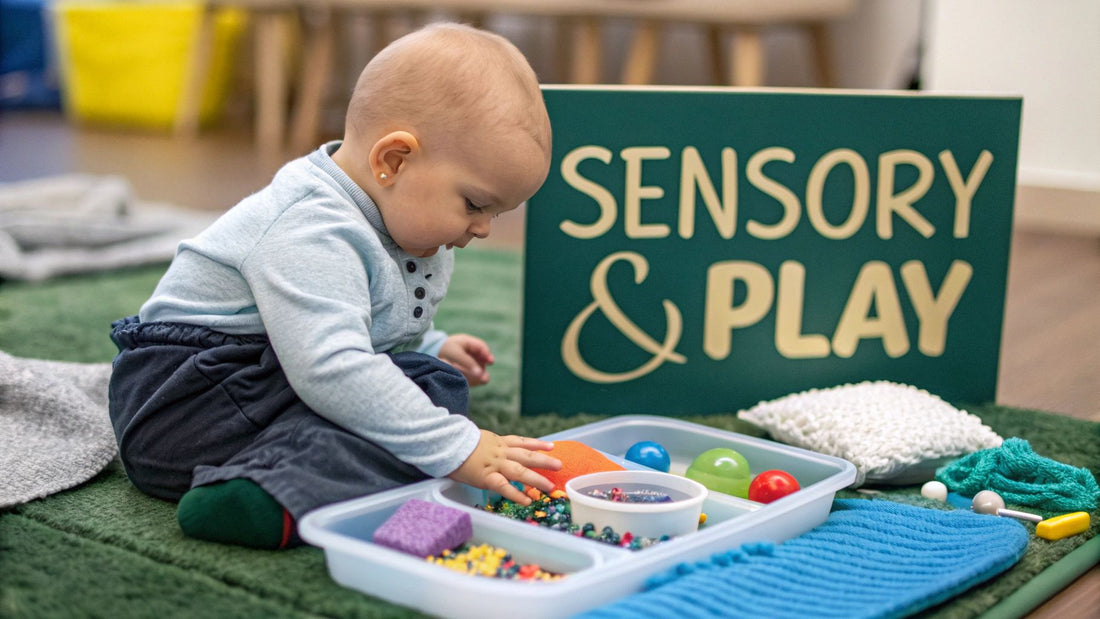
Sensory Play Ideas for Babies: Fun & Safe Activities
Share
Welcome to the vibrant world of your baby's development, where every touch, sound, and sight is a brand new adventure. As parents and caregivers, we are always looking for meaningful ways to connect with our little ones and support their incredible growth. This is where sensory play becomes essential. It’s far more than just messy fun; it is the fundamental work of early childhood, building crucial neural pathways and helping your baby make sense of the world around them.
This guide is built on a simple premise: the best sensory play ideas for babies are often the most straightforward. They don't require expensive, specialised equipment, just a touch of creativity and a willingness to explore alongside your child. You will find a comprehensive roundup of activities organised into eight distinct categories, from water and texture exploration to sound, light, and movement play.
Within each section, we will provide practical setup instructions, specific material suggestions, important safety advice, and a clear explanation of the developmental magic happening with each activity. Our goal is to give you actionable ideas you can implement immediately. Let’s get started on this wonderful journey of discovery and unlock the power of play.
1. Water Play Activities
Water play is a fundamental sensory activity that introduces your baby to the feeling of different water temperatures and textures. This simple yet profound experience engages their tactile and visual senses, offering a wealth of developmental benefits from an early stage. It involves letting your baby safely explore water with their hands and simple toys, fostering curiosity and learning through touch.
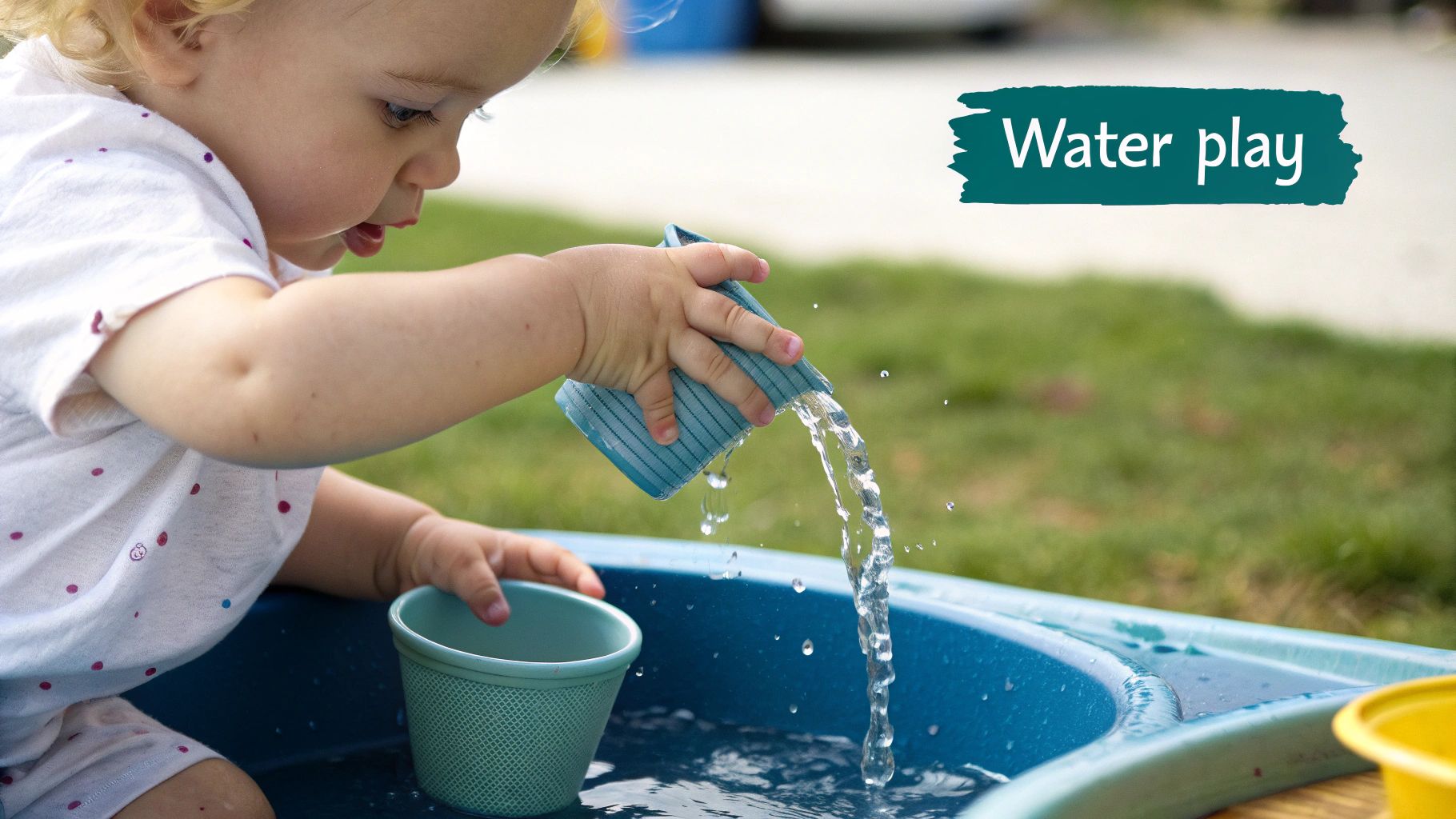
This classic activity is a staple in many child-centred environments for a reason. Paediatric occupational therapy clinics often use water play to help babies with sensory processing, while Montessori settings incorporate pouring activities to build concentration and fine motor skills. It’s one of the most accessible and effective sensory play ideas for babies you can do at home.
Why It's So Beneficial
Engaging with water helps babies understand cause and effect- what happens when I splash? It also builds crucial hand-eye coordination as they try to catch flowing water or grasp floating objects. The gentle pressure and temperature of the water can be incredibly calming, making it a soothing activity for fussy or overstimulated infants.
How to Get Started
Setting up a safe water play station is simple. You can use a shallow tray, a plastic storage bin, or even just the bath.
- Safety First: Always use a very shallow amount of water, just one or two inches is plenty. Never leave your baby unsupervised, not even for a second.
- Temperature Check: Test the water with your elbow to ensure it's comfortably lukewarm, not too hot or cold.
- Keep it Simple: Start with just water. As your baby gets comfortable, introduce simple tools like plastic cups, spoons, and floating toys.
- Session Length: Keep initial play sessions short, around 5-10 minutes, and have towels ready for a quick and easy clean-up.
This foundational activity lays the groundwork for more complex sensory exploration and is a wonderful way to bond with your baby while supporting their early development.
2. Textured Fabric and Material Exploration
Exploring different textures is a fantastic sensory activity that helps your baby's brain make important connections. It involves introducing your baby to a variety of fabrics and materials to touch and feel, stimulating their tactile sense. This simple act of feeling different surfaces, from soft wool to smooth silk, provides rich sensory input that supports neurological development and fine motor skills.
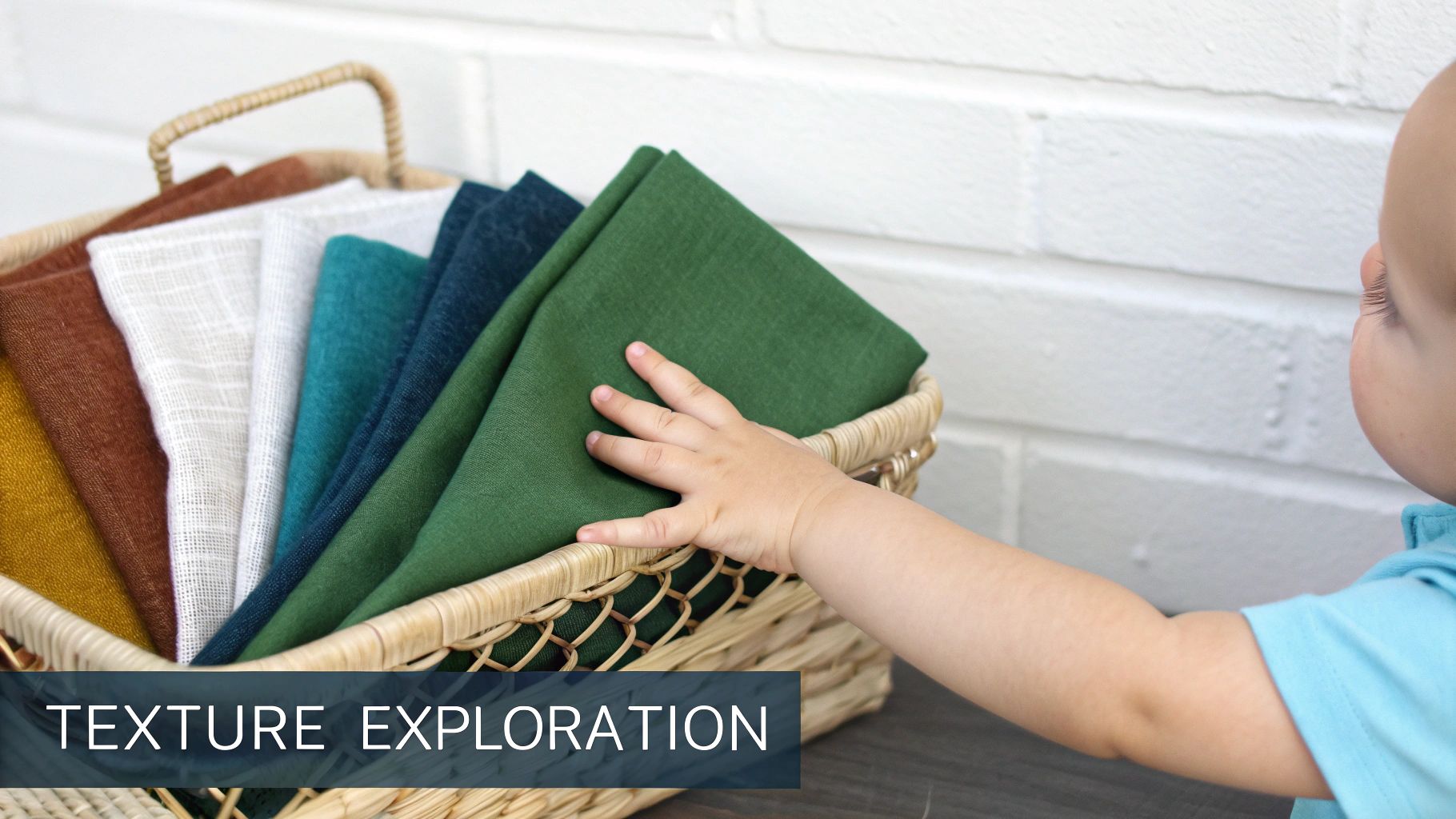
This method is deeply rooted in early childhood philosophies. Maria Montessori’s educational approach heavily features sensory materials, and many Montessori infant communities have "treasure baskets" filled with varied fabrics for exploration. Similarly, paediatric occupational therapists use texture boards and walls in early intervention programmes to help babies process sensory information, making this one of the most effective sensory play ideas for babies.
Why It's So Beneficial
Touching different textures helps babies learn to discriminate between surfaces, a key skill for sensory processing. It develops their pincer grasp and hand strength as they try to pick up and hold materials. This activity also enhances their vocabulary as you name the textures they feel, such as "soft," "bumpy," or "smooth," linking language to physical sensation. To further enrich their environment, you can explore a variety of sensory toys for babies designed to stimulate tactile development.
How to Get Started
Creating a texture basket is easy and can be done with items you already have at home. The goal is to provide a safe and engaging collection for your baby to discover.
- Safety First: Ensure all materials are large enough to not be a choking hazard. Check for loose threads or small parts and supervise your baby at all times.
- Variety is Key: Gather a mix of textures. Think about items like a piece of velvet, a square of corduroy, a silk scarf, a soft woolly jumper, a bumpy piece of hessian, or a cool, smooth wooden spoon.
- Introduce Gradually: Start with just a few gentle and familiar textures. As your baby shows interest, you can gradually introduce new and more distinct materials.
- Keep it Fresh: Rotate the items in the basket every so often to maintain your baby's curiosity and engagement. Wash fabric swatches regularly.
This engaging and simple activity provides a wealth of learning opportunities, helping your baby understand their world one touch at a time.
3. Safe Edible Sensory Play
Edible sensory play uses food-based materials that are safe for babies to explore, taste, and handle. This approach is perfect for young children who naturally explore their world by mouthing objects, allowing them to engage all their senses without any safety concerns while developing oral motor skills and food familiarity.
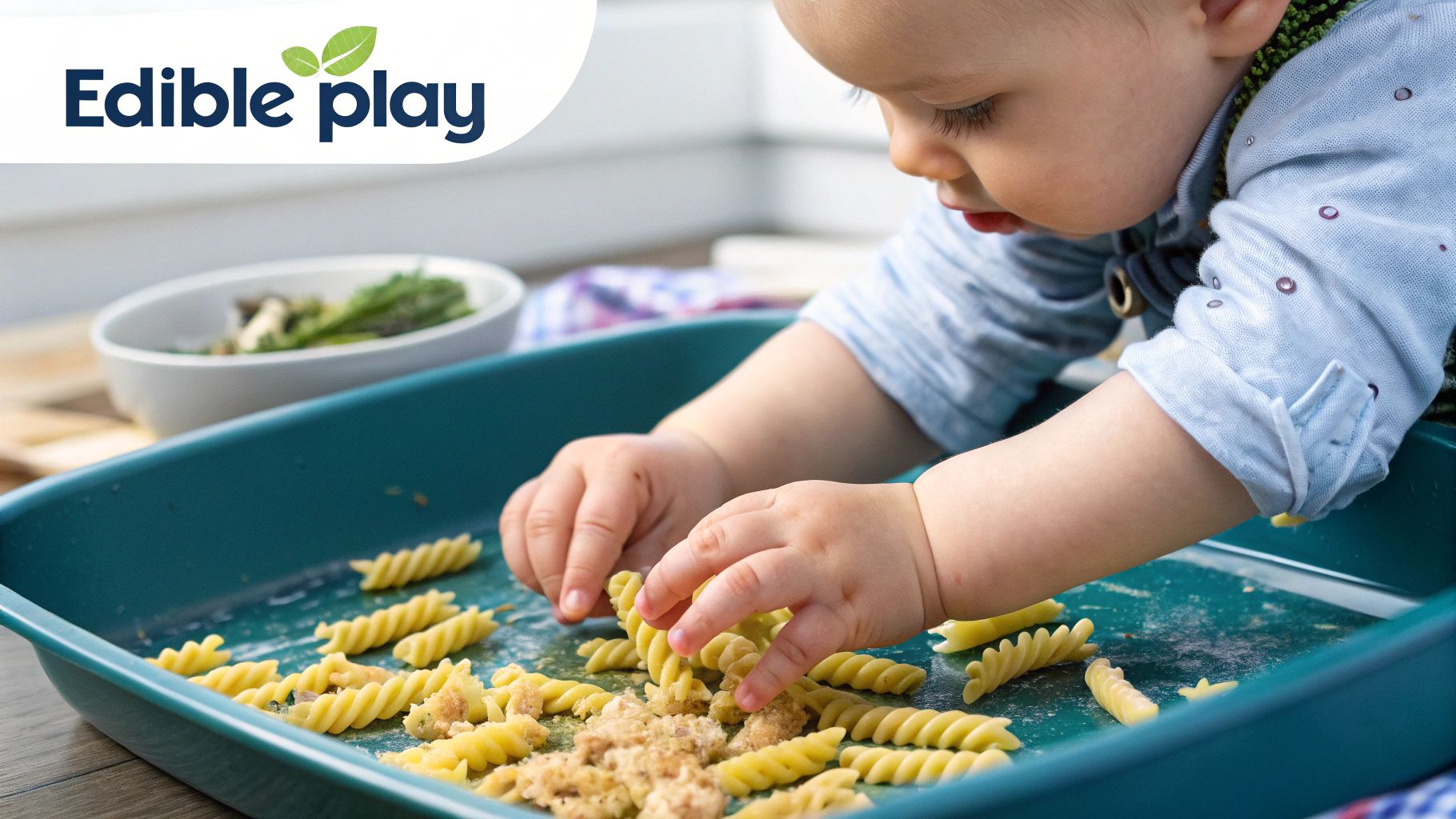
This method is highly valued by professionals. Feeding therapists often use activities like finger painting with pudding to support oral motor development, while baby-led weaning advocates champion food exploration as a precursor to formal eating. It’s a messy but incredibly enriching addition to your list of sensory play ideas for babies.
Why It's So Beneficial
This type of play helps desensitise babies to different food textures, which can be beneficial for preventing picky eating habits later on. It builds positive associations with food by presenting it in a low-pressure, playful context. Manipulating materials like cooked pasta or yoghurt also strengthens fine motor skills and hand-eye coordination.
How to Get Started
Creating a fun and safe edible sensory experience is easy with a little preparation.
- Safety First: Always check for potential food allergies before introducing any new items. Supervise your baby at all times during play.
- Prepare for Mess: Use a splash mat under the highchair and either strip your baby down to their nappy or use a full-coverage bib.
- Start Simple: Begin with familiar foods like plain yoghurt, mashed avocado, or cooked oatmeal. Gradually introduce new textures like cooked pasta shapes or soft fruit pieces.
- Focus on Play: Keep portions small to encourage exploration over consumption. The goal is sensory input, not a full meal. Have cleanup supplies ready before you start for a stress-free finish.
This hands-on, taste-safe activity is an excellent way to nurture your baby's curiosity about food while supporting key developmental milestones.
4. Musical and Sound Exploration
Musical sensory play involves introducing your baby to various sounds, rhythms, and instruments designed for their developmental stage. This auditory-focused experience supports language development and emotional regulation while providing rich sensory input through vibrations and different sound qualities, helping them make sense of the world around them.
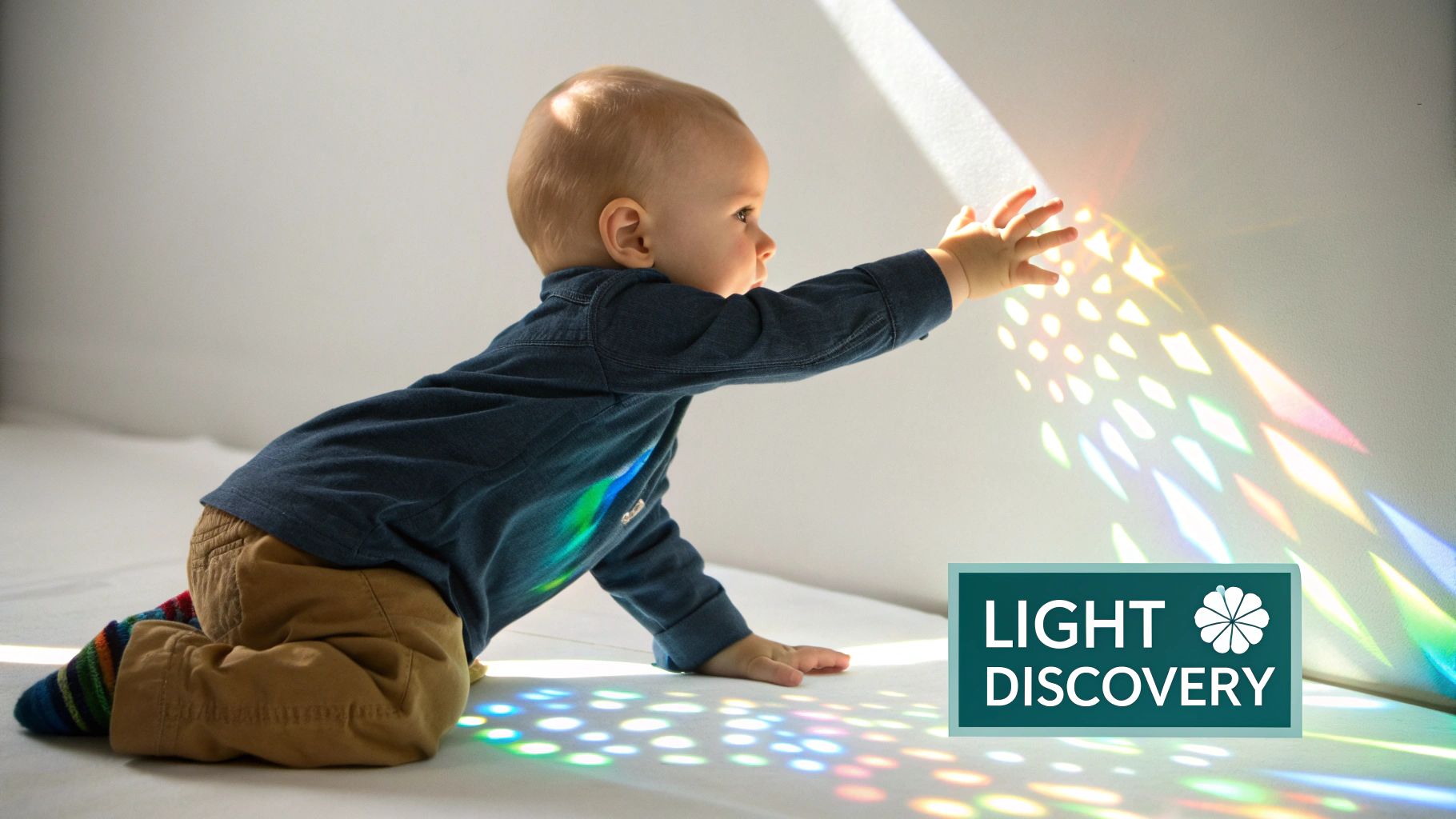
This approach is championed by early childhood music programmes like Kindermusik and is even used by music therapists in neonatal intensive care units (NICUs) to help premature babies regulate their breathing and heart rates. It's one of the most powerful sensory play ideas for babies because it engages their auditory system in a joyful and organised way, laying a foundation for future learning.
Why It's So Beneficial
Exploring sounds helps your baby develop auditory processing skills, which are crucial for distinguishing sounds in language. Shaking a rattle or tapping a drum teaches cause and effect, while the vibrations from an instrument provide unique tactile feedback. Music can also be incredibly soothing, helping to calm a fussy baby and strengthen your emotional bond through shared rhythmic experiences.
How to Get Started
You don't need to be a musician to introduce sound exploration. Your voice is the most important instrument your baby knows.
- Safety First: Ensure any instruments are baby-safe, with no small parts that could become choking hazards.
- Start Softly: Begin with gentle sounds like soft shakers, bells, or your own humming to avoid overstimulation.
- Follow Their Lead: Use instruments that are easy for small hands to grasp, like egg shakers or small tambourines. Watch your baby’s cues to see what sounds they enjoy.
- Incorporate Your Voice: Sing nursery rhymes and simple songs throughout the day. The rhythm and melody of your voice are both comforting and stimulating for their developing brain.
Musical play is a wonderful way to engage your baby's senses, and you can explore more stimulating activities as they grow. To learn more about age-appropriate engagement, you can read about activities suitable for a 4-month-old and adapt them to your child's needs.
5. Light and Visual Sensory Play
Light and visual sensory play introduces your baby to a world of colours, patterns, and movement. This type of play focuses on providing varied visual experiences that are crucial for developing tracking skills, focus, and visual processing. By engaging their sight, you support neurological development and help build connections between what they see and how they move.
This method is highly regarded in various educational and therapeutic settings. Reggio Emilia inspired schools often use light tables for exploration, while vision therapists use specific light toys to support babies with visual impairments. It stands out as one of the most mesmerising sensory play ideas for babies because it taps directly into their developing sense of sight.
Why It's So Beneficial
Visual sensory play helps babies learn to focus their eyes, track moving objects, and begin to understand concepts like light, shadow, and reflection. Stimulating their vision in this way can strengthen the neural pathways in the brain responsible for sight. It also encourages curiosity and can have a wonderfully calming effect, much like watching twinkling fairy lights.
How to Get Started
Creating a visually stimulating environment can be done safely and simply at home. The key is to introduce new sights gradually and observe your baby’s cues.
- Safety First: Ensure any lights or electrical items are baby-safe, kept out of reach, and never left unsupervised. Use shatterproof, acrylic mirrors securely fastened to a wall or play area.
- Start with Natural Light: Begin by exploring how natural light creates shadows and patterns in a room. Use a prism to cast rainbows on the wall for a simple, captivating experience.
- Introduce Simple Tools: Coloured scarves, high-contrast black-and-white cards, and shiny objects like foil blankets are excellent starting points.
- Watch for Overstimulation: Keep sessions short and pay close attention to your baby’s reactions. If they turn away or seem fussy, it’s time for a break.
This gentle yet powerful form of play nurtures your baby's developing vision and lays the foundation for a lifetime of visual learning and discovery.
6. Natural Material Exploration
Natural material sensory play involves providing babies with safe, unprocessed materials from nature such as smooth stones, seashells, wood pieces and organic fabrics like wool or jute. This sensory play idea for babies connects infants deeply with the natural world while offering rich, varied sensory input. It encourages exploration through touch, sight and even subtle natural scents to support holistic development.
Early childhood educators often follow Rudolf Steiner’s Waldorf philosophy, which emphasises simple, open-ended natural materials. Forest schools across the UK adapt this play for infants, using bark strips, leaves and smooth pebbles to spark curiosity. Indigenous programmes also integrate traditional items such as shells or feathers, fostering cultural connection and environmental awareness.
Why It's So Beneficial
Exploring natural textures builds tactile discrimination as babies handle smooth, rough or grainy objects. This variety helps develop fine motor skills, concentration and hand-eye coordination. The calm, earthy colours and muted tones of real materials can also be soothing, reducing overstimulation.
Introducing only real elements reduces exposure to artificial dyes and plastics. It helps infants form an early connection with the environment and supports cognitive skills like sorting by size, weight or texture. This sensory choice is gentle yet profound for developmental growth.
How to Get Started
Gather a small selection of large, safe natural objects:
- Ensure each piece is larger than your baby’s fist to prevent choking
- Clean and sanitise materials thoroughly with mild soap and warm water
- Rotate shells, sticks, pine cones, bark strips or smooth stones seasonally
- Introduce items one at a time to observe preferences
- Supervise closely, especially during mouthing exploration
- Store unused materials in breathable containers to maintain freshness
7. Movement and Vestibular Play
Movement-based play is a crucial sensory experience that stimulates your baby’s vestibular system, the part of the inner ear responsible for balance and spatial awareness. This type of play involves gentle motion like rocking, swinging, and rolling, which helps your baby understand where their body is in space. It's a foundational activity that supports overall sensory integration and motor development.
This form of sensory input is so vital that you’ll see it used by professionals in various fields. Paediatric physical therapists often incorporate gentle bouncing on therapy balls to build core strength, while baby yoga classes focus on slow, deliberate movements to enhance body awareness. These activities are powerful sensory play ideas for babies that help build a strong foundation for future physical milestones.
Why It's So Beneficial
Stimulating the vestibular system helps your baby develop a secure sense of balance, which is essential for sitting, crawling, and eventually walking. These movements can also be incredibly organising and calming for a baby’s nervous system, helping to regulate their state of alertness. This type of play strengthens their neck and core muscles, laying the groundwork for all future motor skills.
How to Get Started
Introducing movement play should be done gently and with careful attention to your baby’s cues.
- Safety First: Always provide full support for your baby’s head and neck, especially with younger infants who have limited head control.
- Gentle Motions: Start with slow, rhythmic movements. Gently rock your baby in your arms, sway with them to music, or lay them on their tummy over your lap and slowly rock your legs.
- Observe and Respond: Pay close attention to your baby’s signals. If they show signs of distress, fussiness, or look away, stop the activity immediately.
- Combine Senses: Make the experience multisensory by singing a soft song or humming as you move. This combines auditory input with the vestibular sensation for a richer experience.
These gentle activities are a wonderful way to connect with your baby while supporting their neurological and physical development from the very beginning. By incorporating these movements, you are helping to build a well-integrated sensory system. You can explore more about how specific toys can support these early stages by reading about the best toys for a newborn's development.
8. Scent and Smell Exploration
Olfactory sensory play introduces babies to safe, gentle scents that stimulate their sense of smell, a sense deeply linked to memory and emotion. This often-overlooked activity involves presenting your baby with a variety of mild, natural aromas, helping to build new neural pathways and support their emotional regulation from a very early age.
This powerful form of sensory engagement is used in various specialised settings. For instance, neonatal intensive care units (NICUs) often use the scent of a parent to comfort premature babies, while Montessori classrooms incorporate "scent cylinders" to help older children refine their olfactory sense. It’s a beautifully simple yet profound way to add another layer to your list of sensory play ideas for babies.
Why It's So Beneficial
The sense of smell is directly connected to the parts of the brain responsible for memory and emotion. Introducing safe scents helps your baby form associations- lavender with calm, citrus with playtime- which can be incredibly soothing. This exploration also helps them learn about their world, differentiating between pleasant, interesting, and neutral smells, which is a key part of sensory processing.
How to Get Started
Creating a safe scent experience is all about using natural, mild aromas and paying close attention to your baby’s cues.
- Safety First: Always use natural, baby-safe scents. Avoid essential oils (unless cleared by a professional), perfumes, and synthetic air fresheners. Never leave scented items where a baby could ingest them.
- Go Natural: Use items from your kitchen or garden. Let your baby smell a sprig of rosemary, a slice of orange, or a cotton ball with a drop of vanilla extract.
- One at a Time: Introduce new scents individually to avoid overwhelming your baby's developing senses. Observe their reaction- do they lean in or turn away?
- Link to Routines: You can associate specific scents with activities. For example, a gentle chamomile scent during the bedtime routine can signal it's time to wind down.
This gentle activity enriches your baby’s sensory world, builds strong emotional and memory connections, and offers a unique way to explore and bond together.
Sensory Play Ideas: 8-Item Comparison
| Sensory Play Type | Implementation Complexity 🔄 | Resource Requirements ⚡ | Expected Outcomes 📊 | Ideal Use Cases 💡 | Key Advantages ⭐ |
|---|---|---|---|---|---|
| Water Play Activities | Medium 🔄 | Low ⚡ (household items) | Fine motor skills, sensory regulation, calming effect | Therapeutic, sensory processing, calming | Soothing, hand-eye coordination, cause-effect learning |
| Textured Fabric and Material Exploration | Medium 🔄 | Low to Medium ⚡ (varied fabrics) | Tactile discrimination, sensory processing, grip strength | Sensory integration, tactile exploration | Easy to create, encourages curiosity, sensory development |
| Safe Edible Sensory Play | Medium 🔄 | Medium ⚡ (food preparation) | Oral motor skills, food familiarity, multisensory input | Early food exploration, oral motor development | Safe for mouthing, promotes adventurous eating |
| Musical and Sound Exploration | Medium 🔄 | Low to Medium ⚡ (simple instruments) | Auditory processing, language support, emotional regulation | Language development, calming, bonding | Supports communication, auditory discrimination |
| Light and Visual Sensory Play | Medium to High 🔄 | Medium to High ⚡ (lighting tools) | Visual tracking, focus, visual-motor integration | Visual development, calming sensory rooms | Develops visual skills, calming, engaging |
| Natural Material Exploration | Medium 🔄 | Low ⚡ (natural found items) | Tactile discrimination, sensory connection to nature | Nature-based learning, calming sensory input | Authentic experience, free materials, calming |
| Movement and Vestibular Play | Medium to High 🔄 | Low to Medium ⚡ (equipment optional) | Balance, spatial awareness, motor development | Vestibular stimulation, calming, motor skill building | Supports balance, calming, core strength |
| Scent and Smell Exploration | Low to Medium 🔄 | Low ⚡ (natural scents) | Memory, emotional regulation, olfactory processing | Emotional soothing, sleep routines, sensory integration | Calming, memory support, emotional regulation |
Integrating Sensory Play into Your Daily Rhythm
As we’ve explored through a wide array of sensory play ideas for babies, enriching your little one's world doesn't require elaborate, time-consuming setups or expensive equipment. The journey of sensory development is built upon a foundation of simple, consistent, and joyful interactions. From the tactile delight of water play and textured fabrics to the intriguing tastes of edible materials and the captivating sounds of homemade shakers, each activity serves as a vital building block for your baby’s rapidly developing brain.
The true power of this approach lies in its integration into your everyday routines. Sensory exploration can happen anywhere, at any time. A nappy change can become a moment for a gentle song or a tickle with a soft feather. Tummy time can be enhanced with a crinkly piece of paper or a smooth, cool wooden toy. A walk in the park transforms into a multi-sensory adventure, filled with the scent of damp earth, the sight of rustling leaves, and the feel of a gentle breeze.
Key Takeaways for Meaningful Sensory Play
Remembering a few core principles will help you maximise the benefits of these experiences:
- Observe and Adapt: Pay close attention to your baby’s cues. Are they leaning in with curiosity, or are they turning away and showing signs of being overwhelmed? Every baby has a unique sensory threshold. Your role is to be a responsive play partner, adjusting the intensity and duration of activities to suit their individual needs and preferences.
- Safety First, Always: A baby's primary method of exploration is through their mouth. Ensure every item you introduce is non-toxic, free of small parts that could pose a choking hazard, and appropriately sized for little hands. Constant supervision is paramount, especially during water play or activities involving edible materials.
- Embrace Simplicity: You don’t need to buy a room full of toys. Some of the most engaging sensory play ideas for babies utilise everyday household items. A metal bowl and a wooden spoon can be a fantastic drum kit, while a collection of different-textured fabrics can provide hours of exploration. The goal is connection and discovery, not complexity.
Laying the Foundation for Lifelong Learning
By thoughtfully incorporating these varied sensory experiences, you are doing far more than just keeping your baby entertained. You are actively supporting the development of crucial neural pathways, strengthening motor skills, and fostering cognitive abilities like problem-solving and memory. You are nurturing their curiosity and building their confidence to explore the world around them. Each new texture, sound, and scent is a piece of information that helps them make sense of their environment. This foundation, built in the earliest months and years, is essential for future learning, language development, and emotional regulation. It is a profound gift that shapes how they will engage with and understand the world for the rest of their lives.
Ready to take the guesswork out of sensory play? The curated boxes from Grow With Me deliver age-appropriate, high-quality toys and activities directly to your door, making it effortless to provide enriching experiences. Explore the Grow With Me subscription boxes and discover how simple it can be to support your baby’s development through play.
